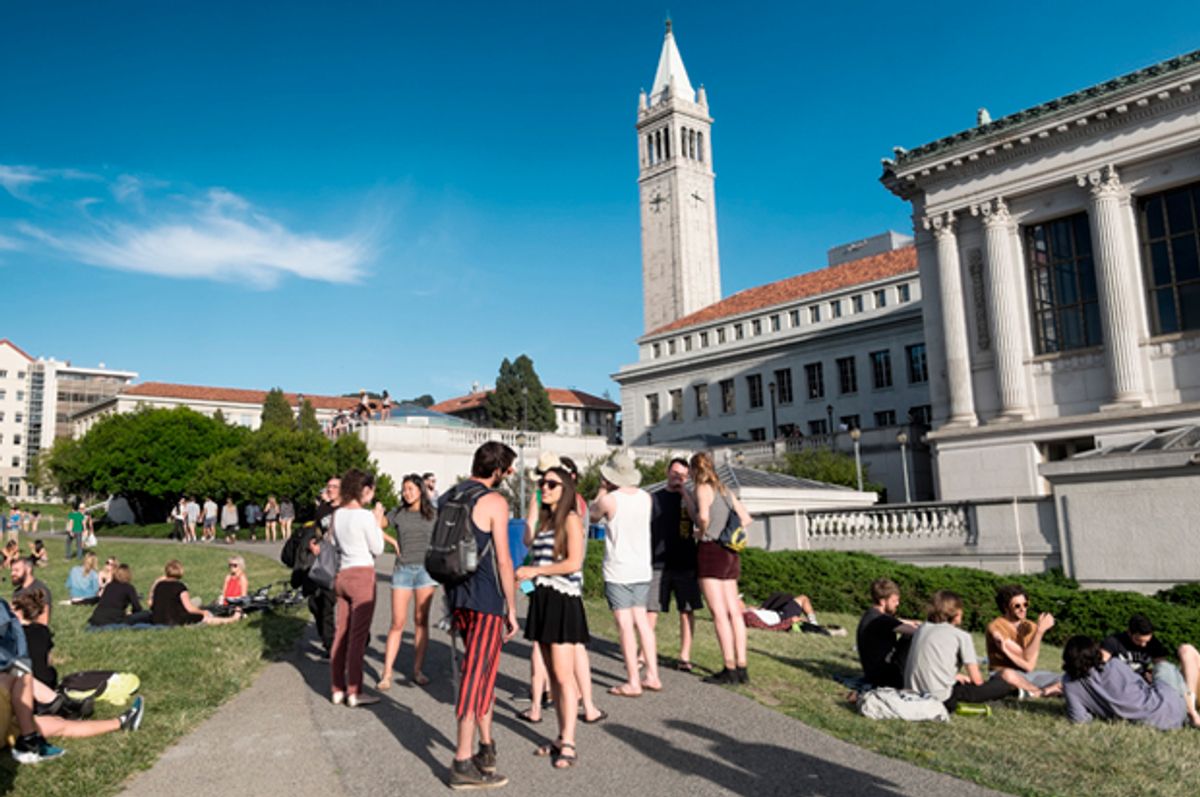Despite the evidence that we already have too many students in higher education, the hot new idea among the political class is to double down by pushing for “free college tuition.”
The problem with the “free college” idea is, however, not merely financial. It also reinforces the myth that college is appropriate or even possible for all students. That myth already has destructive consequences for both the quality of higher education and for some of the students caught up in what has become a multi-billion dollar hoax.
As unrealistic as it is, the idea that everyone should attend college has been embraced by Americans. By 1992, 95 percent of high school seniors said they planned to go on to college -- even though half of them lacked even basic 9th grade math and verbal skills. These aspirations, however, had dramatic real-world consequences: In 1979 fewer than half of high school graduates enrolled in college. By 2012, that number had soared to more than two-thirds, and even with the dumbed-down curricula and inflated grades, many of them would have a rude encounter with reality.
How bad is it? Of the 1.8 million students assessed for college readiness in 2014, ACT found that only 26 percent met college-ready benchmarks in all four subjects (English, reading, math and science). Education critic Charles Murray notes that a study of 41 institutions of higher learning shows that an SAT score of 1180 will give a college freshman a 65 percent chance of maintaining a 2.7 grade point average. But that is a score that only about one in ten 18-year-olds could achieve. “So,” writes Murray, “even though college has been dumbed down, it is still too intellectually demanding for a large majority of students.” Even so, in recent decades, 30 percent of students with C grades in high school and 15 percent with a grade point average of C minus or lower have been admitted into four-year colleges. That has consequences both for the students and for the institutions, which often have to adjust their standards to the new demographic realities.
One result is that nearly one in five students in four-year institutions and more than half of students in two-year colleges end up in remedial courses.
To put it bluntly, the push for “college for all” sets up students to fail. While the debate over a “college bubble” often focuses on the costs of student debt for those who have graduated, the reality is that somewhere between 40 and 45 percent of students who enroll in college drop out. The dropout rate among lower-income students is much higher. For those students the wage premium for attending college without getting a degree is basically zero.
This is inevitable when unprepared students, fed with unrealistic expectations, are pumped into a system that is more interested in enrolling them than in giving them an actual education. Even as the number of students who aspire to college has exploded, the evidence suggests that not only are many of them utterly unprepared to do college-level work, they also have no realistic idea of what that even entails. In one survey of high school students in the Chicago area, nearly half agreed with the statement “Even if I do not work hard in high school, I can still make my future plans come true.”
No one wants to tell the entitled snowflakes that it doesn’t work that way.
This is what makes President Obama’s proposal for free community college so problematic. Obama’s idea was to provide free tuition to as many as 9 million students to attend community colleges at a cost to the federal government of $60 billion, plus another $20 billion from state taxpayers.
If the goal was to address the cost of higher education, Obama had chosen an odd solution: To the extent there is a problem with higher education being too expensive, community colleges are not really a critical part of the problem, since tuition is generally around $3,800 a year. Nor are community colleges necessarily part of the solution.
While too many unprepared students are attending college, the numbers for community colleges are especially brutal; according to the Beginning Postsecondary Students Survey more than two-thirds (68 percent) of public community college students took at least one remedial course, and those students generally ended up taking three remedial classes. From there, the numbers get even uglier. A Fordham Foundation study notes that only about 60 percent of the community college students in remedial classes pass the classes and just 22 percent of those students go on to pass courses that actually earn credits. Few of these non-college-ready students ever end up actually getting degrees. Overall, only one out of five community college students goes on to a four year-college.
If enacted, Obama’s proposal would likely result in even more students entering college without sufficient preparation. To her credit, Hillary Clinton has said that “college is crucial, but a four-year degree should not be the only path to a good job.” But her proposals for “free” tuition for millions of students will likely serve to further inflate the higher education bubble.
Of course, free stuff makes for good politics, especially when it aligns itself so well with the push to get as many warm bodies into higher education as possible. But it’s time for someone to point out that the emperor has no clothes: “College for all” is a costly hoax that benefits neither society nor the students who are sidetracked from more productive alternatives.



Shares